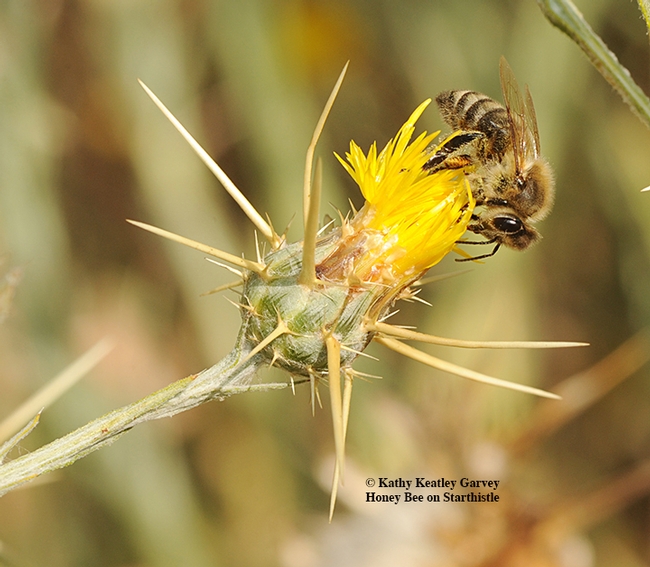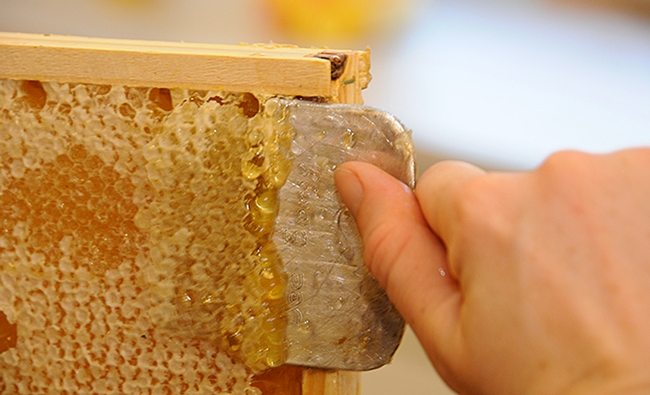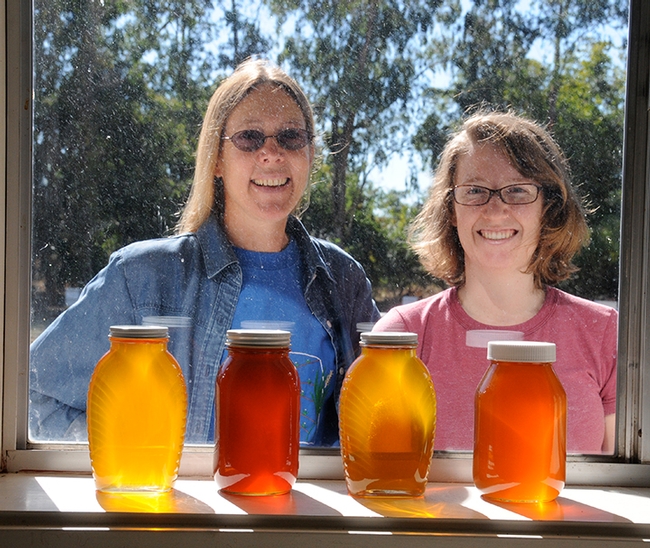Imagine watching your honey bees gathering nectar from star thistle--which some beekeepers claim makes the best honey. (Yes, Centaurea solstitialis is an invasive weed. The love-hate relationship runs deep; farmers and environmentalists hate it; beekeepers love it.)
Then imagine you picking up one of the top prizes in the country for having the best honeycomb--made from star thistle honey.
That's what happened when Miss Bee Haven Honey of Brentwood, Calif., entered its honey in the national Good Foods Awards competition and won one of the top 2017 awards. Their bees, based in numerous locations, primarily forage in the San Francisco Bay Area and along the Delta.
Fast forward to today. There's still time to fill out the forms to enter your honey in the next Good Foods Awards competition; the deadline is Monday, July 31. Only the form--not the honey--is due July 31. The honey can be the August harvest, as the judging won't take place until Sept. 17 in San Francisco, said Amina Harris, director of the UC Davis Honey and Pollination Center, who coordinates the contest. She announced that awards will be given in four subcategories: Liquid and Naturally Crystallized, Creamed, Comb, and Infused Honey.
Dates to keep in mind, in addition to the July 31 entry deadline (see entry information and the full criteria for honey) are Sept. 17 when the blind tasting takes place in San Francisco (entrants will be asked to ship their product a week in advance; and October 2017 (high scoring products undergo sustainability vetting) and November 2017 (when finalists are announced).
Harris says there are more than 300 unique types of honey in the United States. "The Good Food Awards," she said, "will showcase honeys most distinctive in clarity and depth of flavor, produced by beekeepers practicing good animal husbandry and social responsibility."
Harris and master beekeeper/journalist Mea McNeil of San Anselmo are coordinating the honey committee, which also includes
- Emily Brown, Owner, AZ Queen Bee
- Mark Carlson, Beekeeping instructor and entomologist, Round Rock Honey Beekeeping School
- Kim Flottum, editor, Bee Culture Magazine
- Marina Marchese, Founder, The American Honey Tasting Society and co-author The Honey Connoisseur
- Terry Oxford, Owner, UrbanBee San Francisco
The 2017 winners who took home the bragging rights:
- Bee Girl, Bee Girl Honey, Oregon
- Bee Local, Bee Local Sauvie Honey, Oregon
- Bee Squared Apiaries, Rose Honey, Colorado
- Bees' Needs, Fabulous Fall, New York
- Bloom Honey Orange Blossom, California
- Gold Star Honeybees, Gold Star Honey, Maine
- Hani Honey Company, Raw Creamed Wildflower Honey, Florida
- Mikolich Family Honey, Sage and Wild Buckwheat, California
- MtnHoney, Comb Honey Chunk, Georgia
- Posto Bello Apiaries, Honey, Maine
- Sequim Bee Farm, Honey, Washington
- Simmons Family Honey, Saw Palmetto Honey, Georgia
- Two Million Blooms, Raw Honey, Illinois
- UrbanBeeSF, Tree Blossom Honey Quince and Tree Blossom Honey, Napa, California
The Honey and Pollination Center is affiliated with the UC Davis Robert Mondavi Institute for Wine and Food Science and the UC Davis Department of Entomology and Nematology. For more information contact Amina Harris at (530) 754-9301 or aharris@ucdavis.edu.
Attached Images:

A honey bee foraging on star thistle, Centaurea solstitialis. It's an invasive weed but makes great honey, beekeepers and honey connoisseurs say. (Photo by Kathy Keatley Garvey)

Honey comb being processed. (Photo by Kathy Keatley Garvey)

The colors of honey sparkle in the sunlight. This photo, taken in 2009, shows former UC Davis bee breeder-geneticist Susan Cobey (now of Washington State University) and her then assistant, Elizabeth Frost (now of New South Wales) at the Harry H. Laidlaw Jr. Honey Bee Research Facility, UC Davis. (Photo by Kathy Keatley Garvey)